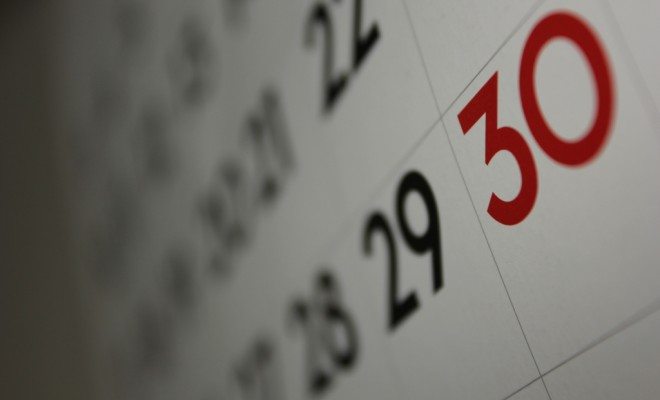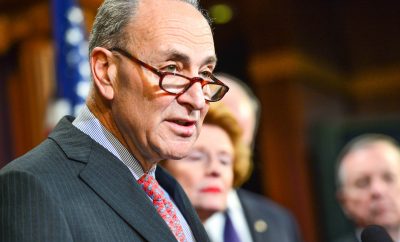 "Calendar*" courtesy of [Dafne Cholet via Flickr]
"Calendar*" courtesy of [Dafne Cholet via Flickr]
Elections
After Last Weekend, All Eyes are on Super Tuesday
Democrats in Nevada and Republicans in South Carolina took to the polls on Saturday to choose their parties’ nominee for President. When the dust settled, Donald Trump walked away with a commanding lead in the South Carolina primary while Hillary Clinton pulled out ahead in the Nevada primary. The recent contests help solidify the conventional wisdom about the election so far, but much of the analysis is still speculation. While many questions remain, we may soon have answers–Super Tuesday is approaching.
The GOP
Although each party has only held three contests in this year’s election season, the race is starting to take a distinctive shape. Donald Trump has managed to transition his significant lead in national and state polls into a sizeable lead in actual delegate counts after three contests. While most have remained skeptical of Trump throughout the early stages of the election cycle, his lead is becoming more and more difficult to refute.
With a second place finish in Iowa and two first place finishes by sizeable amounts in New Hampshire and South Carolina, Donald Trump sits well ahead of his challengers. Nate Silver at FivetThirtyEight has a nice breakdown of the impending battle between “Trump Optimists” and “Trump Skeptics” that will pan out in the ensuing weeks. While optimists cite Trump’s strong performance in recent contests and continued dominance in the polls, skeptics note that there may be a ceiling for his support; as more establishment-supported candidates drop out Republican voters could rally behind Trump’s most electable challenger.
The Dems
When it comes to the Democratic Party’s race, Hillary Clinton is starting to take more control over the race when it comes to coalition building and endorsements. When it comes to pledged delegates, which are awarded based on the results of state caucuses and primaries, Sanders and Clinton are basically tied. But when you factor in superdelegates–Clinton currently leads with over 500 total delegates while Sanders has just 70–Clinton has a commanding lead and some important momentum from Nevada. On Saturday, Clinton took away 19 delegates and Sanders managed to get 15. In a race to 2,383 delegates, the vast majority remain undetermined.
Sanders has surprised spectators and has proven to be a much stronger opponent than nearly anyone anticipated. But Clinton has managed to earn the support of some very important Democratic constituencies. In addition to a strong lead in superdelegates, who are Democratic Party leaders, Clinton has been endorsed by the Congressional Black Caucus and retains a significant amount of support among union members–two very important Democratic voting blocks.
Hillary Clinton managed to win in Nevada, which is considerably more diverse than Iowa and New Hampshire, the first two primary states. While there is some debate over Clinton’s success among Latino voters in Nevada, she has managed to maintain a strong support among minority voters. That support is likely to play an important role in the coming primaries. Harry Enten at FiveThirtyEight wrote a thorough breakdown of the demographics in the upcoming contests:
While only 13 percent of Nevada caucus-goers in 2016 were black, their share in South Carolina will be much higher (55 percent of South Carolina Democratic primary voters were black in 2008). That’s why Clinton is up by 25 percentage points in the South Carolina polls. Even beyond South Carolina, on Super Tuesday 63 percent of the delegates up for grabs will be in contests with a higher share of African-Americans than Nevada.
While most of the discussion so far rests largely on speculation, the important thing to keep in mind is that our picture of the race will soon get a much-needed dose of clarity–Super Tuesday is just over a week away. On March 1, 11 states vote to allocate around 880 delegates to the Democratic candidates. To put that in perspective, just over 100 pledged delegates have been assigned to candidates so far. The biggest change now is the fact that a lot of delegates are going to be determined very quickly. The pace of the campaign picks up considerably in March, which will tests the organization and reach of every campaign in new ways. The Democratic Party’s proportional system of delegate allocation, which awards candidates delegates based on their share of the popular vote, will likely keep the pledged delegate count close in the coming weeks. But if Clinton manages to take the lead after Super Tuesday, Sanders may have a hard time catching up to her.
Final Takeaways
Super Tuesday will be a big test for the Sanders campaign, which will need to compete with Clinton in a range of primaries spanning several demographic groups. We’ll also have to wait and see if Donald Trump can turn his massive polling lead into actual votes. While the so-called ceiling theory of Trump support will be tested soon, as it currently stands, establishment Republicans have the most to worry about.








Comments